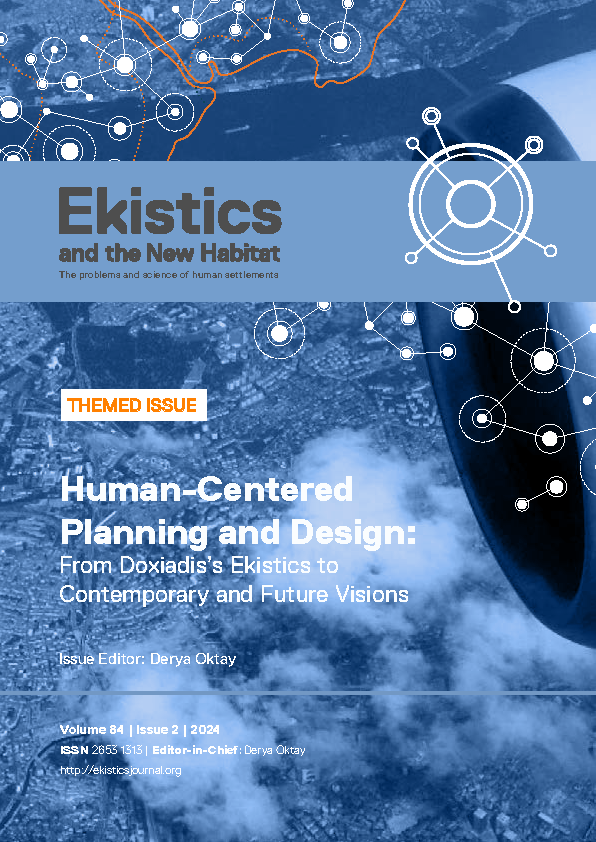C. A. Doxiadis's Pedestrian Esplanades
DOI:
https://doi.org/10.53910/26531313-E2024842674Keywords:
Pedestrian Esplanades, post-war urban planning, urban spatial fragmentation, C. A. DoxiadisAbstract
In the early 1960’s, the phenomena of the displacement of free social space and people in cities due to the reshaping of urban centers to accommodate automobiles, became a driving force propelling C. A. Doxiadis (1913-1975) to explore design variations for urban squares and esplanades. In this article, analysis of a series of urban plans for Korangi, Islamabad and Lahore Pakistan, New Eastwick Philadelphia, Louisville Kentucky, USA, Tema, Ghana, Aleppo University, Saigon, Vietnam, and Miami, Florida USA, developed from 1957to 1972 applies space syntax and Conzenian methods to understand the genotype of Doxiadis’s new urban design variants for pedestrian urbanism. Viewed holistically, the project sequence reflect Doxiadis’s epistemology of design inquiry into future social spatial relationships in the city. His experimentation with a diversity of planning strategies for pedestrian squares and esplanades are found to generate a distribution of movement in ways that often downplays urban centrality forming a new genotype for the 20th century post war city.
Downloads
Published
How to Cite
Issue
Section
Categories
License
Copyright (c) 2024 Ekistics and The New Habitat

This work is licensed under a Creative Commons Attribution-NonCommercial-NoDerivatives 4.0 International License.
Please contact the Editor-in-Chief: editor@ekisticsjournal.org, should you have any questions on copyright for your submission.
This research journal is for Educational and Knowledge development purposes.
All material published on this site complies with our copyright and terms as described by the Attribution-NonCommercial-NoDerivaties 4.0 International (CC BY-NC-ND 4.0)






